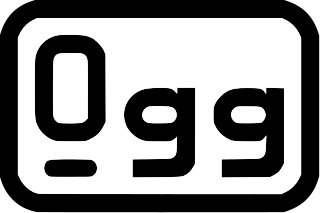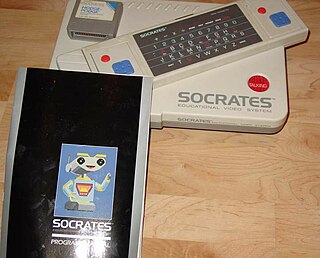Related Research Articles
Multimedia is a form of communication that uses a combination of different content forms, such as writing, audio, images, animations, or video, into a single interactive presentation, in contrast to traditional mass media, such as printed material or audio recordings, which feature little to no interaction between users. Popular examples of multimedia include video podcasts, audio slideshows, and animated videos. Multimedia also contains the principles and application of effective interactive communication, such as the building blocks of software, hardware, and other technologies.

Ogg is a free, open container format maintained by the Xiph.Org Foundation. The authors of the Ogg format state that it is unrestricted by software patents and is designed to provide for efficient streaming and manipulation of high-quality digital multimedia. Its name is derived from "ogging", jargon from the computer game Netrek.

Pedagogy, most commonly understood as the approach to teaching, is the theory and practice of learning, and how this process influences, and is influenced by, the social, political, and psychological development of learners. Pedagogy, taken as an academic discipline, is the study of how knowledge and skills are imparted in an educational context, and it considers the interactions that take place during learning. Both the theory and practice of pedagogy vary greatly as they reflect different social, political, and cultural contexts.
Streaming television is the digital distribution of television content, such as television series and films, typically streamed over the internet. Standing in contrast to dedicated terrestrial television delivered by over-the-air aerial systems, cable television, and/or satellite television systems, streaming television is provided as over-the-top media (OTT) or as Internet Protocol television (IPTV). In the United States, streaming television has become "the dominant form of TV viewing."
An educational film is a film or movie whose primary purpose is to educate. Educational films have been used in classrooms as an alternative to other teaching methods.

High-Efficiency Advanced Audio Coding (HE-AAC) is an audio coding format for lossy data compression of digital audio defined as an MPEG-4 Audio profile in ISO/IEC 14496–3. It is an extension of Low Complexity AAC (AAC-LC) optimized for low-bitrate applications such as streaming audio. The usage profile HE-AAC v1 uses spectral band replication (SBR) to enhance the modified discrete cosine transform (MDCT) compression efficiency in the frequency domain. The usage profile HE-AAC v2 couples SBR with Parametric Stereo (PS) to further enhance the compression efficiency of stereo signals.
A learning management system (LMS) or virtual learning environment (VLE) is a software application for the administration, documentation, tracking, reporting, automation, and delivery of educational courses, training programs, materials or learning and development programs. The learning management system concept emerged directly from e-Learning. Learning management systems make up the largest segment of the learning system market. The first introduction of the LMS was in the late 1990s. LMSs have been adopted by almost all higher education institutions in the English-speaking world. Learning management systems have faced a massive growth in usage due to the emphasis on remote learning during the COVID-19 pandemic.
Educational technology is the combined use of computer hardware, software, and educational theory and practice to facilitate learning. When referred to with its abbreviation, "EdTech," it often refers to the industry of companies that create educational technology. In EdTech Inc.: Selling, Automating and Globalizing Higher Education in the Digital Age, Tanner Mirrlees and Shahid Alvi (2019) argue "EdTech is no exception to industry ownership and market rules" and "define the EdTech industries as all the privately owned companies currently involved in the financing, production and distribution of commercial hardware, software, cultural goods, services and platforms for the educational market with the goal of turning a profit. Many of these companies are US-based and rapidly expanding into educational markets across North America, and increasingly growing all over the world."

Indeo Video is a family of audio and video formats and codecs first released in 1992, and designed for real-time video playback on desktop CPUs. While its original version was related to Intel's DVI video stream format, a hardware-only codec for the compression of television-quality video onto compact discs, Indeo was distinguished by being one of the first codecs allowing full-speed video playback without using hardware acceleration. Also unlike Cinepak and TrueMotion S, the compression used the same Y'CbCr 4:2:0 colorspace as the ITU's H.261 and ISO's MPEG-1. Indeo use was free of charge to allow for broadest usage.
Technology integration is defined as the use of technology to enhance and support the educational environment. Technology integration in the classroom can also support classroom instruction by creating opportunities for students to complete assignments on the computer rather than with normal pencil and paper. In a larger sense, technology integration can also refer to the use of an integration platform and application programming interface (API) in the management of a school, to integrate disparate SaaS applications, databases, and programs used by an educational institution so that their data can be shared in real-time across all systems on campus, thus supporting students' education by improving data quality and access for faculty and staff.
"Curriculum integration with the use of technology involves the infusion of technology as a tool to enhance the learning in a content area or multidisciplinary setting... Effective technology integration is achieved when students can select technology tools to help them obtain information on time, analyze and synthesize it, and present it professionally to an authentic audience. Technology should become an integral part of how the classroom functions—as accessible as all other classroom tools. The focus in each lesson or unit is the curriculum outcome, not the technology."
Mr. Know-It-Owl's Video School was a series of videos released on videocassette, and later repurposed to interactive CD-ROM, and is hosted by a purple owl puppet. The Mr. Know-It-Owl series was copyrighted by Apollo Educational Video. Aimed at younger children, Mr. Know-It-Owl, attempts to educate children in safety, health, grammar, and the three Rs. There were over 10 videos released and a series of CD-ROM. The main characters were Phineas, Scooter McGruder, and of course, Mr. Know-It-Owl.

An educational video game is a video game that provides learning or training value to the player. Edutainment describes an intentional merger of video games and educational software into a single product. In the narrower sense used here, the term describes educational software which is primarily about entertainment, but tends to educate as well and sells itself partly under the educational umbrella. Normally software of this kind is not structured towards school curricula and does not involve educational advisors.
A serious game or applied game is a game designed for a primary purpose other than pure entertainment. The "serious" adjective is generally prepended to refer to video games used by industries like defense, education, scientific exploration, health care, emergency management, city planning, engineering, politics and art. Serious games are a subgenre of serious storytelling, where storytelling is applied "outside the context of entertainment, where the narration progresses as a sequence of patterns impressive in quality ... and is part of a thoughtful progress". The idea shares aspects with simulation generally, including flight simulation and medical simulation, but explicitly emphasizes the added pedagogical value of fun and competition.
Glogster was a cloud-based (SaaS) platform for creating presentations and interactive learning. A platform that allows users, mostly students and educators to combine text, images, video, and audio to create an interactive, Web-based poster called glogs on a virtual canvas. Glogster facilitated the conveyance of social information in many different fields such as art, music, photography. Users also had access to a library of engaging educational content posters created by other students and educators worldwide. Glogster enabled interactive, collaborative education and digital literacy.
Adaptive bitrate streaming is a technique used in streaming multimedia over computer networks.

Teaching Channel is a multi-platform service founded in 2010 delivering professional development videos for teachers over the Internet. In addition to showcasing inspiring teachers in videos, Teaching Channel also hosts a community for educators to share ideas, best practices and enhance their knowledge. Started as a nonprofit organization, the company was converted to a for-profit in 2017.

Imagine Learning, formerly Twig Education, is a digital media company that offers educational content to schools via subscription websites.
Project Lead The Way (PLTW) is an American nonprofit organization that develops STEM curriculum for use by US elementary, middle, and high schools.
CIIT Philippines - College of Arts and Technology is a private, non-sectarian educational institution in the Philippines that at provides specialized and practical education with a focus on arts, technology, and business.

Educational management refers to the administration of the education system in which a group combines human and material resources to supervise, plan, strategise, and implement structures to execute an education system. Education is the equipping of knowledge, skills, values, beliefs, habits, and attitudes with learning experiences. The education system is an ecosystem of professionals in educational institutions, such as government ministries, unions, statutory boards, agencies, and schools. The education system consists of political heads, principals, teaching staff, non-teaching staff, administrative personnel and other educational professionals working together to enrich and enhance. At all levels of the educational ecosystem, management is required; management involves the planning, organising, implementation, review, evaluation, and integration of an institution. Research in educational management should explore the dynamic interplay among educational leaders, their followers, and the broader community to enhance the quality of teaching and learning outcomes.
References
- ↑ Alexander, Geoff (10 January 2014). AIMS Media History. McFarland. ISBN 9780786460007.
- ↑ Alexander, Geoff (10 January 2014). AIMS Multimedia - Charles Cahill and Associates. McFarland. ISBN 9780786460007.
- ↑ "AIMS Multimedia sale to Discovery Communications, Inc". 11 February 2018.
- ↑ "Discovery Acquires AIMS Multimedia's DigitalCurriculum". Archived from the original on 2014-09-09.
- ↑ "AIMS and Britannica Team Up". Archived from the original on 2014-09-09.
- ↑ "Britannica and AIMS Team Up". Archived from the original on 2014-09-09. Retrieved 2014-09-08.
- ↑ "Discovery Acquires DigitalCurriculum". Archived from the original on 2014-09-09.
- ↑ "DigitalCurriculum Sales Jump". Archived from the original on 2016-03-05. Retrieved 2014-09-08.
- ↑ "AIMS Multimedia". Archived from the original on 2014-10-23. Retrieved 2014-09-08.
- ↑ "DigitalCurriculum version 5" (PDF).